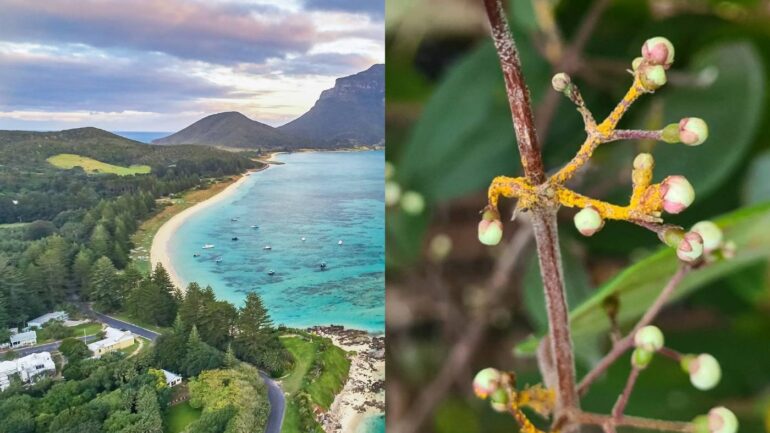Have you ever watched Last of Us, a popular video game and TV series where a fungus turns humans into horrifying mushroom zombies?
Australian experts have discovered another type of fungus named myrtle rust on Lord Howe Island off Australia’s east coast. Lucky for us, it is not the Last of Us situation.
However, myrtle rust still poses a massive threat to a number of iconic plant species that live there and the Island’s ecosystem as a whole.
So, what is this fungus? Where did it come from, and how did it get to Lord Howe Island? What dangers does it pose to Australia’s native plant species?
In this podcast episode of The Science Briefing, Dr Sophie Calabretto gets an update on the fungal outbreak at Lord Howe Island from Cosmos Magazine journalist Imma Perfetto.
Perfetto said that Myrtle rust originated in South America and was first detected in Australia on the Central Coast of NSW in April 2010.
Myrtle rust is a silent killer and affects a wide range of plants in the family Myrtaceae, including eucalypts, paperbarks, tea trees, and lilly pillies.
“Infections in the leaves typically result in a brown lesion on the upper side, and yellow spore masses called pustules, on the underside of the leaf. These can coalesce across the whole leaf and kill the leaf and eventually the whole shoot, Perfetto said.
“The fungus also attacks flowers and develops fruits which kill them, rendering the plant infertile,” she added.
“New foliage is most susceptible, so when the tree is actively growing and especially if the plant might be putting out a new flush of growth after events like bushfires, a whole tree can be affected as well.”
Tune into the full episode of The Science Briefing below…
Introducing The Science Briefing: a podcast about the science of everything and your new go-to podcast for your snapshot of science news. Hosted by Dr Sophie Calabretto and featuring journalists from Cosmos Magazine. Hear The Science Briefing on the LiSTNR app now.
